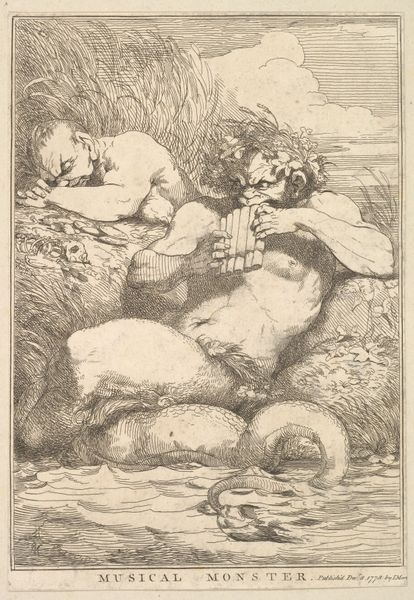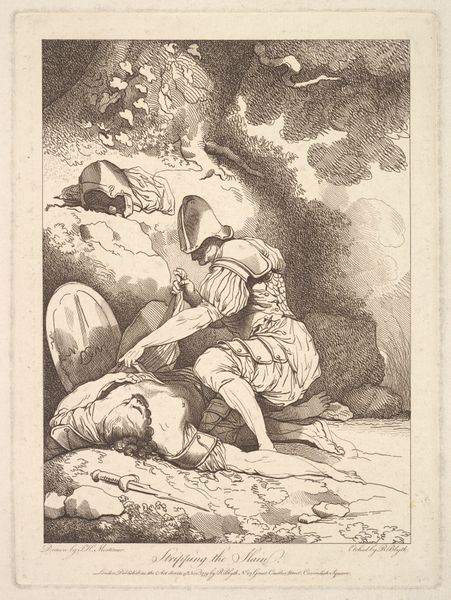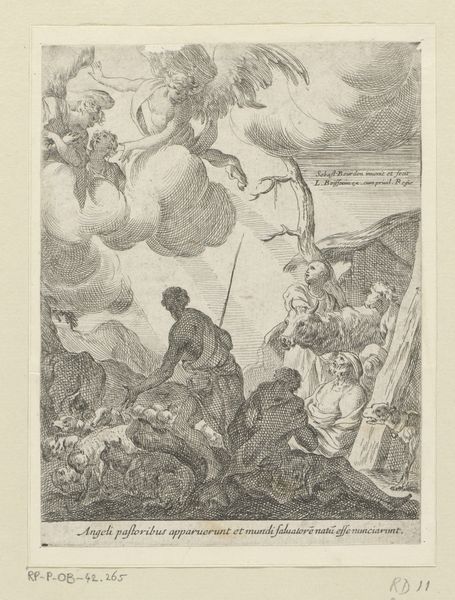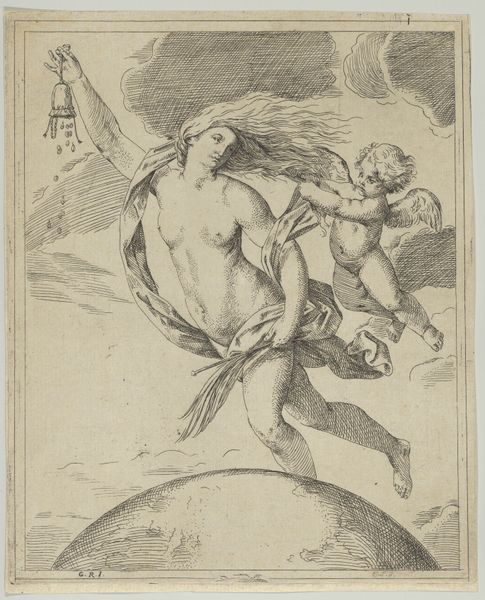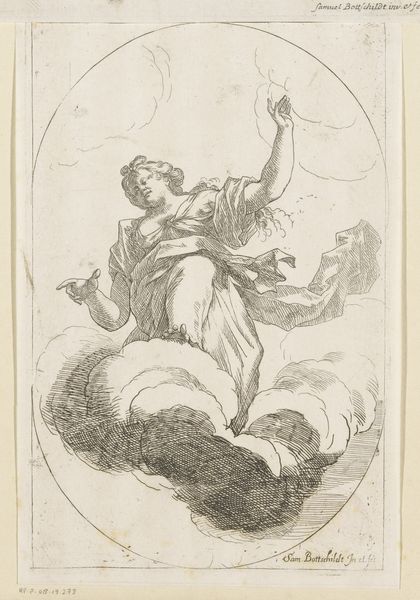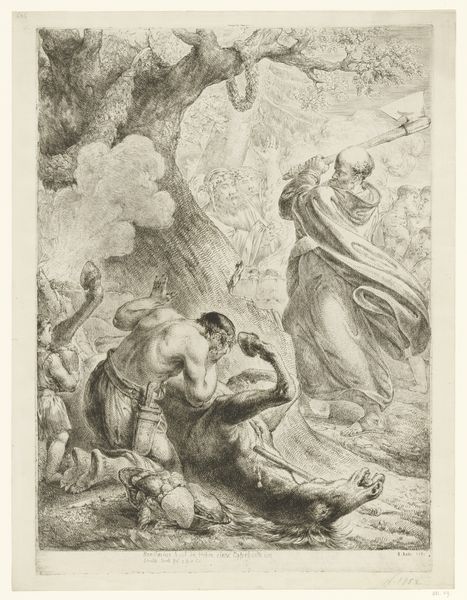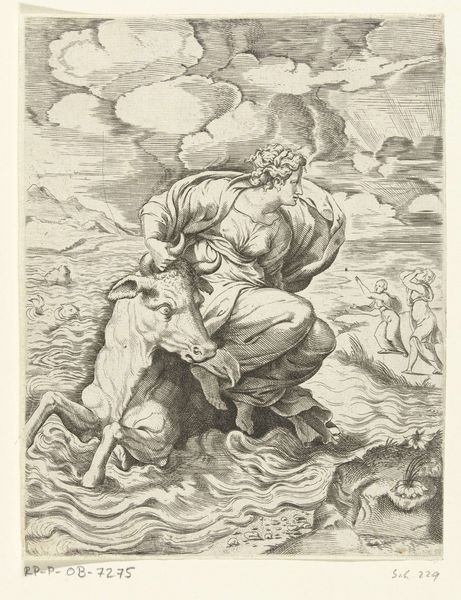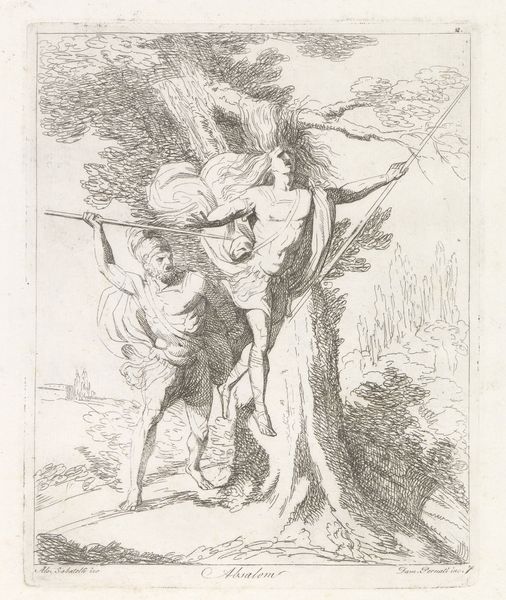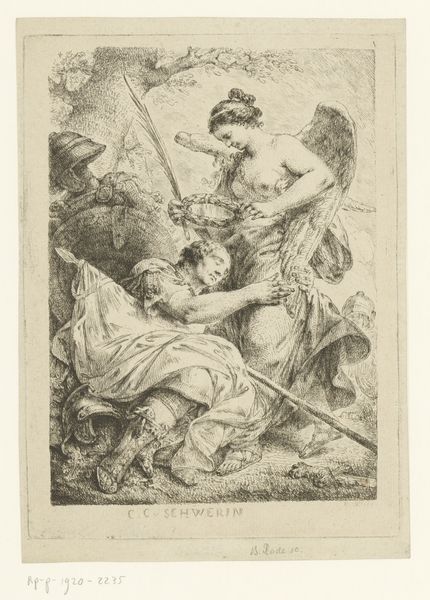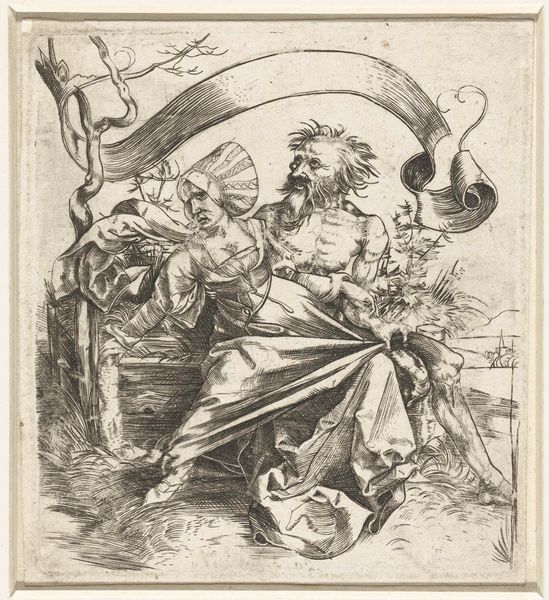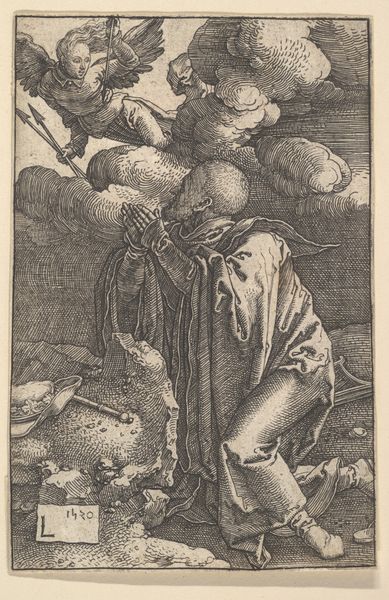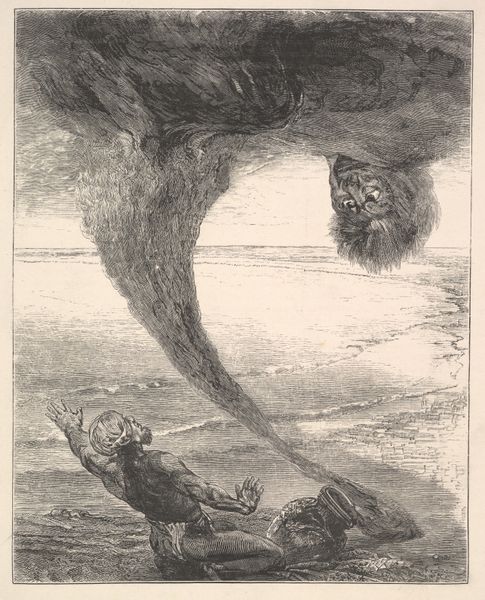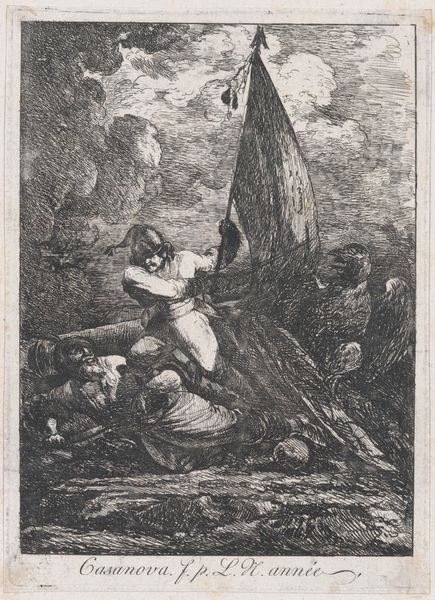
Dimensions: Plate: 9 1/8 x 6 5/8 in. (23.1 x 16.8 cm) Sheet: 15 7/8 x 10 5/8 in. (40.3 x 27 cm)
Copyright: Public Domain
Curator: This image just pulses with unrestrained energy! The swirling lines and the grotesque figures immediately create a sense of chaos and violence. Editor: Indeed. We’re looking at "Enrag'd Monster," a print etched and engraved by John Hamilton Mortimer in 1778, now residing at the Metropolitan Museum of Art. Mortimer, though a painter, also had a strong graphic output, influenced by his time. Curator: Looking at it through a contemporary lens, this evokes a deep questioning of power structures. It feels as if it’s about the monsters created by societal oppressions turning against each other. Note how both beings are locked in an embrace, suggesting shared culpability in a system of violence. Editor: His milieu was London's art world, embroiled in debates about national identity, historical subject matter, and the role of public taste in shaping artistic production. "Enrag'd Monster" is less concerned with accuracy than conveying psychological states and moral allegories, which was appreciated then. Curator: Exactly, this isn’t just about depicting fantastical creatures. It uses grotesque imagery to visualize anxieties and conflicts. The fact that it's titled "Enrag'd Monster" points to that internal fury—perhaps the monster of colonial expansion consuming its own. I cannot ignore the grotesque imagery; that face seems to mimic caricatures of the era of differented and racialized peoples. Editor: Yes, the publishing date is important, too. 1778 situates the artwork within the turbulent context of the American Revolution. The etching could serve as commentary on the destructive forces unleashed by political and social upheaval both local and abroad. I am seeing commentary, yes. But specifically in a domestic theatrical lens. Curator: I completely agree; its rawness is captivating. Mortimer holds up a mirror to a world gripped by intense emotion and brutal power struggles. It's a potent reminder that we must actively work against the conditions that breed such "monsters" whether literally or figuratively. Editor: And understanding its position within the artistic debates of its era can bring a great clarity to its function within both an elite and a burgeoning popular sphere. Considering the image and its impact helps ground our ideas to create a historical narrative in the art and function of art history.
Comments
No comments
Be the first to comment and join the conversation on the ultimate creative platform.

